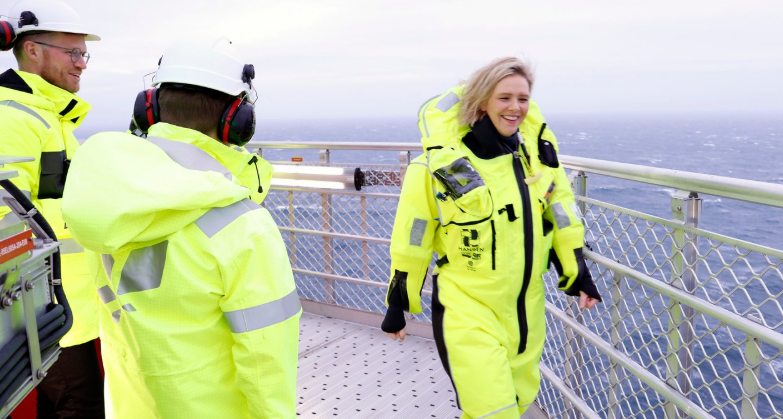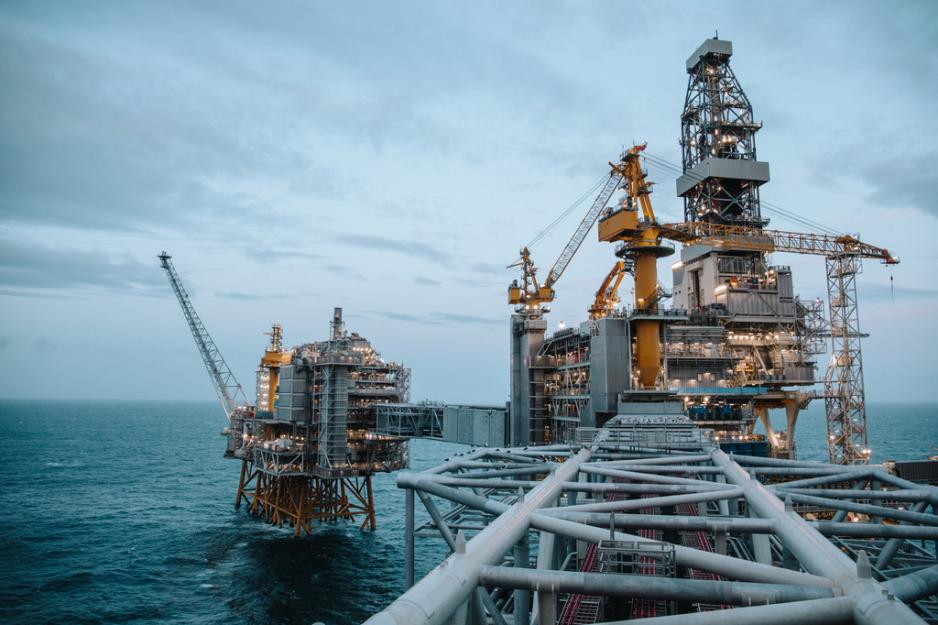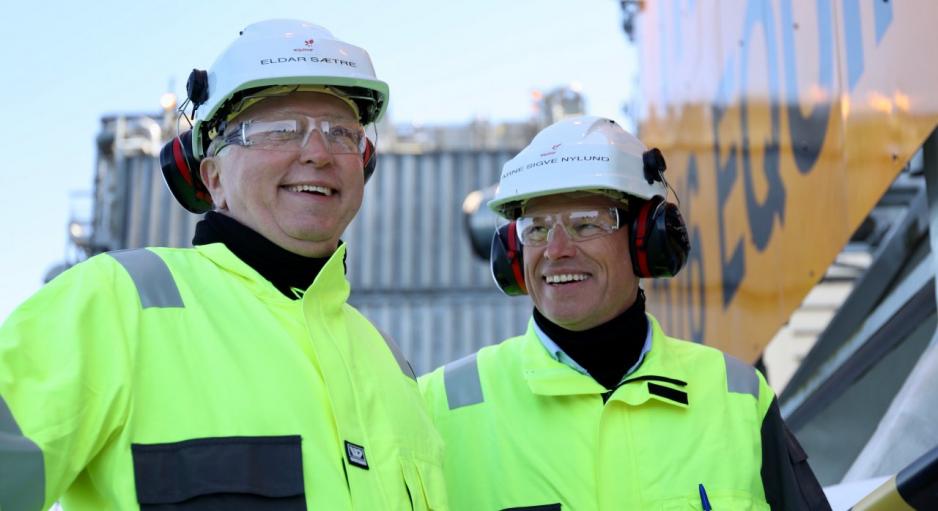Writing the First Chapter of 50 New Years of Norwegian Oil History

Prime Minister Erna Solberg and Oil and Energy Minister Sylvi Listhaug arriving at the Johan Sverdrup oil field Tuesday morning. Photo: Equinor
On Tuesday, there was much fanfare when the Johan Sverdrup field in the North Sea was officially opened. This was the launch of 50 new years of oil history in Norway. A major paradox, environmentalists argue.
Just after 12 noon, Prime Minister Erna Solberg (Conservatives) conducted the official opening of the Johan Sverdrup field in the North Sea. The Sverdrup field is the largest oil project on the Norwegian shelf since the 1980s.
Oil and gas has been pumped up here since October, however, the official opening was only this week.
“An important project to fund the welfare state”, PM Solberg said in her opening remarks.
And continued:
“The petroleum industry is there to stay for the next decades to come. The world needs more energy and there will still be a demand for Norwegian oil and gas. Can that be combined with our aiming to also reach the climate goals? I believe so.”
Oil and Energy Minister Sylvi Listhaug (Progress Party) also spoke during the opening.
“The Sverdrup field delivers, also when it comes to the climate challenge. Thanks to renewable energy from the mainland, oil from this field will be produced with very low CO2 emissions, some 700 grams per barrel, compared to a world average of some 18 kilograms per barrel. Sverdrup goes to show that our climate policy works”, she said.
Giant field
The opening of the field that can pump up 2.7 billion barrels of oil for at least 50 years to come is hailed for contributing with thousands of jobs and providing NOK 900 billion to the country and its citizens, though it is also heavily criticized by the environmental movement.
Climate activist Greta Thunberg is one of the people who have publicly criticized Norway for opening the field.
“Despite our being on the verge of a climate and environmental crisis, Norway opens Western Europe’s largest oil field”, Thunberg writes on Twitter, referring to a story about the field printed in the Financial Times.
Diverging opinions
Une Bastholm of the Green Party argues that the field will “contribute massively to the climate crisis” and thus be a majorly flawed investment. She further refers to the world’s ambition about becoming fossil fuel free by 2050, 20 years before the Sverdrup field is scheduled to stop producing.
The Liberal Party voted in favor of developing the field when the issue was discussed in Stortinget, Norway’s parliament. However, the party’s Guri Melby, who is a MP while party leader Trine Skei Grande is in government, argues that this should be the last time Norway opens up such a big field.
“I will argue that Johan Sverdrup should be the last field of this size. Aiming for this kind of investments in the future will be stupid, both for economic as well as climate reasons”, she says to Norwegian daily Dagbladet.
Oil and Energy Minister Listhaug could not disagree more with Melby and comments to Dagbladet that:
“If we were to be as fortunate as to locate another giant field like Johan Sverdrup, we will of course facilitate development and construction to exploit these resources.”
Also read
Major cut ambitions
The opening of the Sverdrup field took place the day after Equinor going public with a promise to cut climate gas emissions by 40 percent within the next decade and bringing it towards zero by 2050. This is to happen primarily through electrifying the facilities on the shelf.
Nevertheless, it is thus only a small percentage of the CO2 emissions that stem from the continental shelf production. Most of the CO2 emissions from oil and gas stem from the burning of it in cars, power plants and industry.
“This is not policy to us, it is business. However, it is also a natural part of our corporate social responsibility” said Equinor CEO Eldar Sætre when presenting the new ambitions.
Sætre was also clear that the plan does not entail a halt to oil and gas production in Norway. On the contrary, Equinor aims for continued exploratory activities as well as significant initiatives for increased production on existing fields.
This article was originally published in Norwegian and has been translated by HNN's Elisabeth Bergquist.






